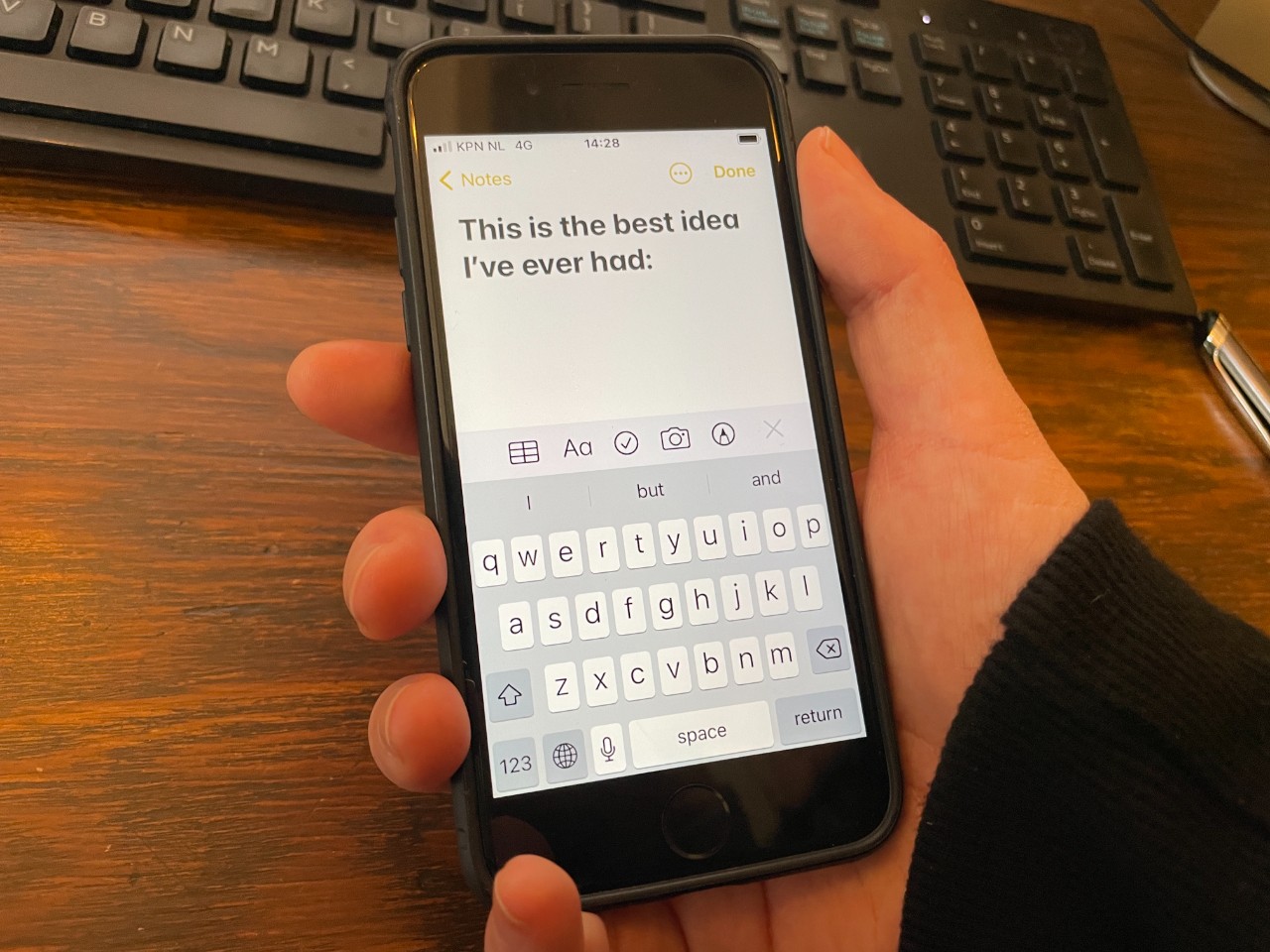Since I started working on an innovation consultancy, I realised that the greatest thing about creativity is that it can be triggered by anything — music, a word, an article you read, or even by the way the sun sets. As inspirational as this sounds, we’ve all had moments where a blank page looked scary.
Here are some tips I learned from my team on how to be more creative — and generate new ideas when they seem nowhere to be found.
Break old thinking patterns
We all bring a set of assumptions and old thinking patterns to each and every situation. Even if many turn out to be true, you must think twice and challenge your preconceptions. It might open the door to exciting possibilities!
The way you’re used to defining or framing a problem can also limit your creativity. If you rephrase the problem and look at it from a different angle, new solutions emerge.
Mix your media
Disruptive ideas can arise from tackling problems in unusual ways. A great way to do this is to apply different types of creativity — don't simply talk or write about your ideas — explore them through music, painting, photography, sculpture… whatever enables you to express yourself. Fresh thinking can emerge when — like my colleagues say — you let your creative juices flow!

Make new connections
Another way to generate new ideas is to make new and unexpected connections. Have you ever thought about asking your team members to bring a small object of their choice to your next ideas meeting?
You could generate new ideas by asking questions such as, "How is this object like the problem we're trying to solve?" or "How could we use this object to meet our challenge?"
Get fresh persepectives
You'll often get a surprising new take on an issue by talking to someone with a different perspective; maybe because of their age, life experience, or cultural background.
The process of communicating an idea, even if you don’t solicit feedback, helps you clarify and see it in a new way and the process of coming up with questions to ask and listening to people’s answers can frequently lead to new paths.
In his book Range - Why Generalist Triumph in a Specialized World, Daniel Epstein mentions that “labs in which scientists had more diverse professional backgrounds were the ones where more and more varied analogies were offered, and where breakthroughs were more reliably produced when the unexpected arose”.

Think in reverse
If you're finding it difficult to think of a new approach, the solution may lie in turning the problem upside-down! When you stop thinking about your issue in a logical and straightforward way, you may end up with a fresh perspective or solution — by doing the exact opposite of what is expected.
Pay attention to your needs
People often want to come up with the “Next Big Thing”, focusing on big ideas instead of looking at the small details.
Look at Harry Burt and the Good Humor story -— when Burt became the first ice cream vendor to move from pushcarts to motorised (black) trucks, he had to make people trust his product — since ice cream sold from pushcarts was seen as a source of food poisoning and dubious quality. His move was not to change the product but paint his pickup trucks and dress its drivers in crisp, white uniforms: because it reminded people of those worn by hospital orderlies.
Keep track of your ideas
As you know by now, inspiration can come from everywhere so write things down. Now that smartphones are ubiquitous, there is no longer the excuse of not having a pen and paper handy when a brilliant idea comes to mind.

Finish what you start
While it can be tempting to step away from a project that’s almost finished, sometimes it's best to finish it first and assess from there. While it may not be quite right, by doing this, you are able to assess what worked and what didn't.
Brainstorm
As mentioned above, working as a team can be key in generating new ideas, so get a group of people together to address a problem, challenge, or opportunity. Ask your group to generate as many ideas as possible, no matter how “off the wall” they may seem. During this period, there is just one rule: no criticism is allowed. Finish by reviewing the ideas, select the most interesting, and then lead a discussion about how to combine, improve, and/or implement the ideas.
There are plenty of definitions for creativity — and I dare to say that there are as many definitions as there are different types of creatives. So use the examples above as a starting point and remember these three key notes to encourage creative thinking:
-
Rest, relaxation and sleep are all important for recharging your creative batteries — who has never had an “Aha!” moment while having a shower?
-
Conquer distractions — when you're focused on generating ideas, and feel "in the zone" stay there;
-
Have faith that great ideas will come!




